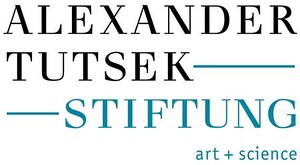Fugitive
February 12–June 12, 2016
Prinzregentenstrasse 1
80538 Munich
Germany
Hours: Wednesday–Monday 10am–8pm,
Thursday 10am–10pm
T +49 89 21127113
mail@hausderkunst.de
American artist James Casebere (born 1953) belongs to a generation of artists who have questioned the veracity of images from the beginning and for whom a photograph is something other than a document. His detailed images depict architectural models made by the artist using materials such as polystyrene, paper and plaster. The models are clearly models, they do not conceal their construction. Over the years, Casebere has created his own distinctive visual language through the use of his cinematic and architectural approach. Casebere’s images do not refer to stable, existing objects. Rather, compressed in them is a system of political and associative references, even to things such as volatile memories or dreams. “I am trying to create something that embodies or dramatizes the kind of psychic space that exaggerates certain ideas and experiences,” is how Casebere describes his pictorial method, a strategy in which the models exemplify what might be characterized as the architectural unconscious of a given spatial system.
Casebere’s early representations questioned the established codes of the American Midwestern middle-class value system. A well-known work from this period is the latently violent and somewhat morbid photograph of a refrigerator penetrated by an oversized fork (Fork in the Refrigerator, 1975).
Flooded and desolate spaces, whether illuminated or dark, are recurring illusionistic motifs in series of works from the late 1990s and early 2000s. The artist came up with the idea of flooding rooms with water on a trip to Berlin, shortly after the fall of the Berlin Wall in 1989. Casebere studied the neglected parts of the city with particular attention, including the sewage system and the metro stations linking West and East Berlin, which he believed especially clearly expressed “the historical unconscious of Germany.”
For the exhibition Casebere has created site-specific works for the large staircase of the exhibition space: four friezes that refer to Haus der Kunst’s complex political history as a representational National Socialist structure. The new works, which also explore the ceremonial system of the Albert Speer-designed Zeppelin Field in Nuremberg, are thus part of the continuing confrontation with historically burdened architecture—a topic that both Casebere and Haus der Kunst have long been investigating.
With over 50 works produced in a variety of formats and techniques, the exhibition covers all periods of Casebere’s 40-year artistic career: large single and multi-part colour photographs, black and white silver gelatin prints, dye destruction prints, and waterless lithographs. For the first time, the artist will also present working models and sketchbooks, source materials, as well as an extensive selection of previously unseen Polaroid studies, thereby revealing the development process of selected works, from the various production stages to the finished frame.
The exhibition is accompanied by a catalog, edited by Okwui Enwezor; with contributions by Okwui Enwezor, Caleb Smith and Brian Wallis (Prestel Publishers).
The exhibition is made possible with major support by the Alexander Tutsek-Stiftung.
Currently on view:
Hanne Darboven. Enlightenment
Till February 14
Capsule 3: Lynette Yiadom-Boakye
Till February 14
Capsule 4: Adele Röder
Till February 14
Cold Libido. Goetz Collection at Haus der Kunst
Till February 28
DER ÖFFENTLICHKEIT – VON DEN FREUNDEN HAUS DER KUNST.
Laure Prouvost – We would be floating away from the dirty past
Till September 18
Interventions into Architecture: Christian Boltanski and Gustav Metzger
Archive Gallery 2015/16
Opening soon:
A History: Contemporary Art from the Centre Pompidou
March 25–September 4
Postwar - Art between the Pacific and the Atlantic, 1945–1965
October 14, 2016–March 26, 2017
Subscribe for Haus der Kunst Newsletter here.


